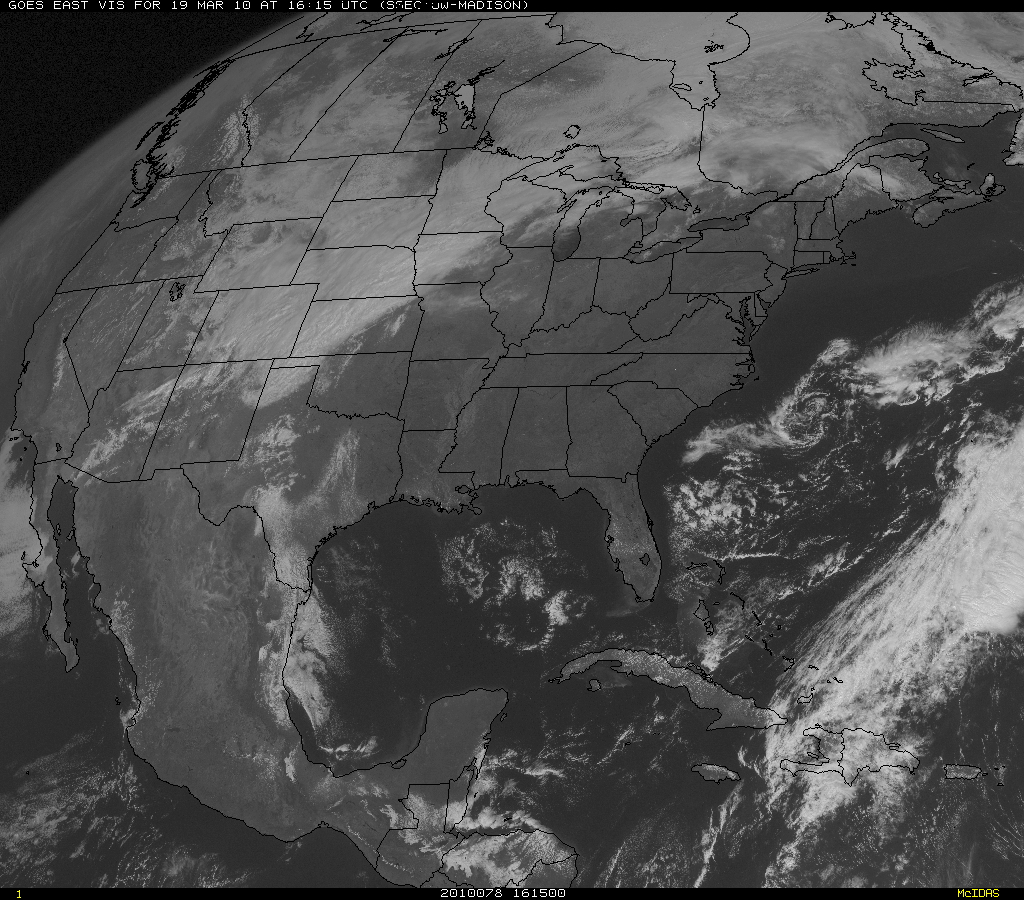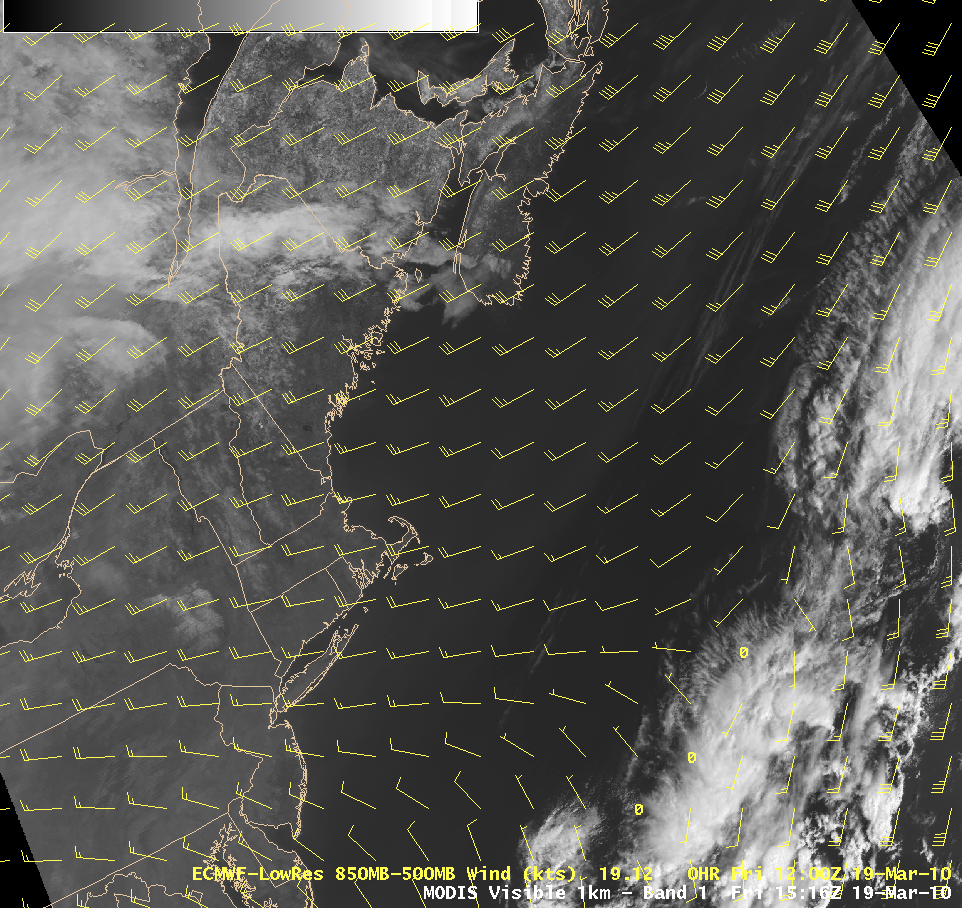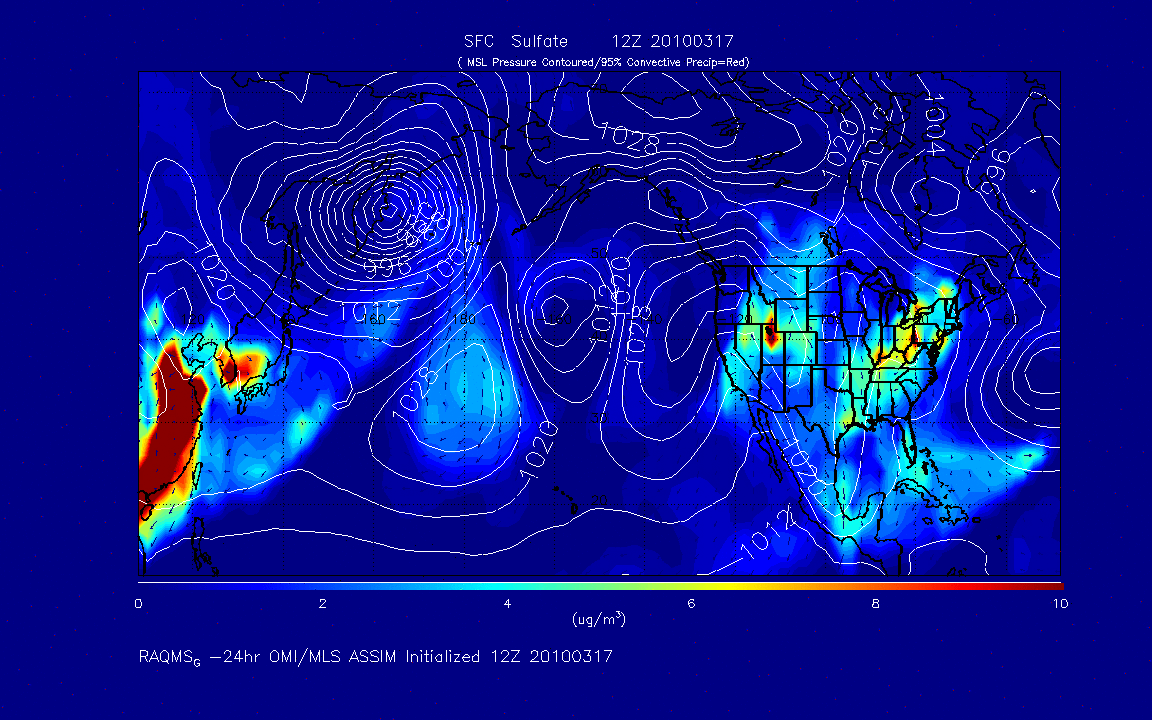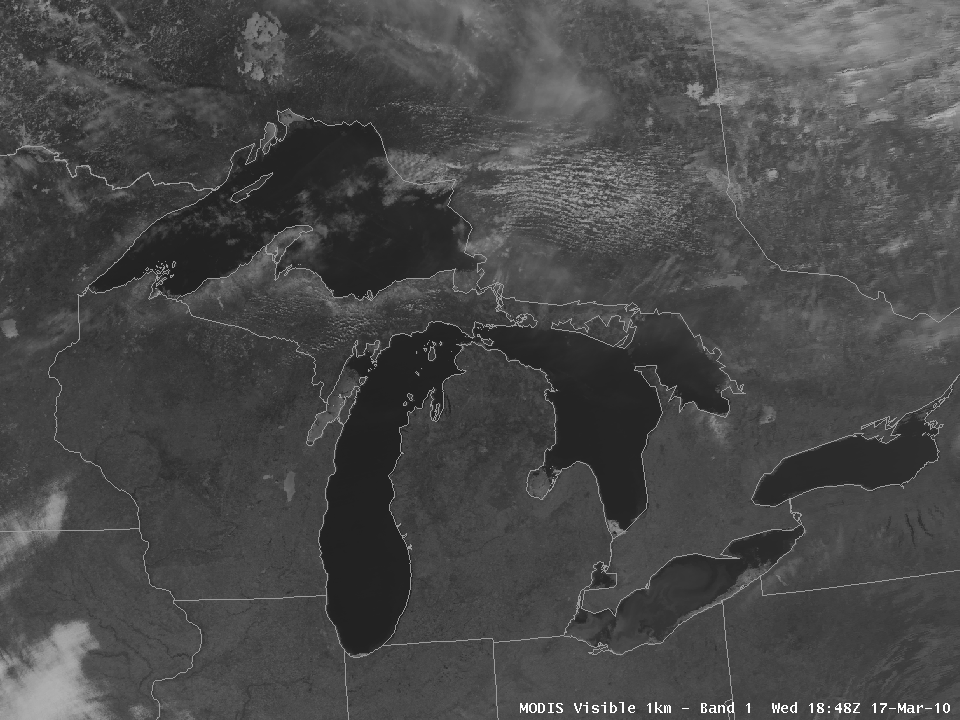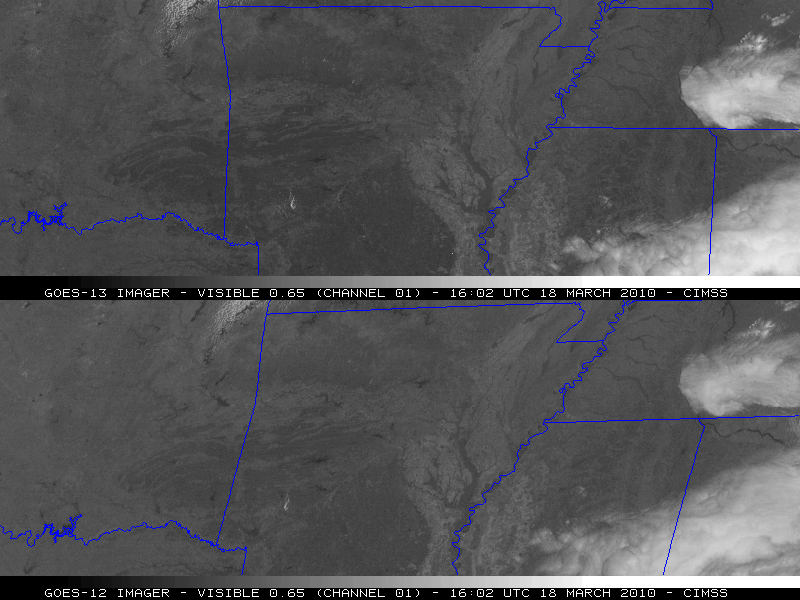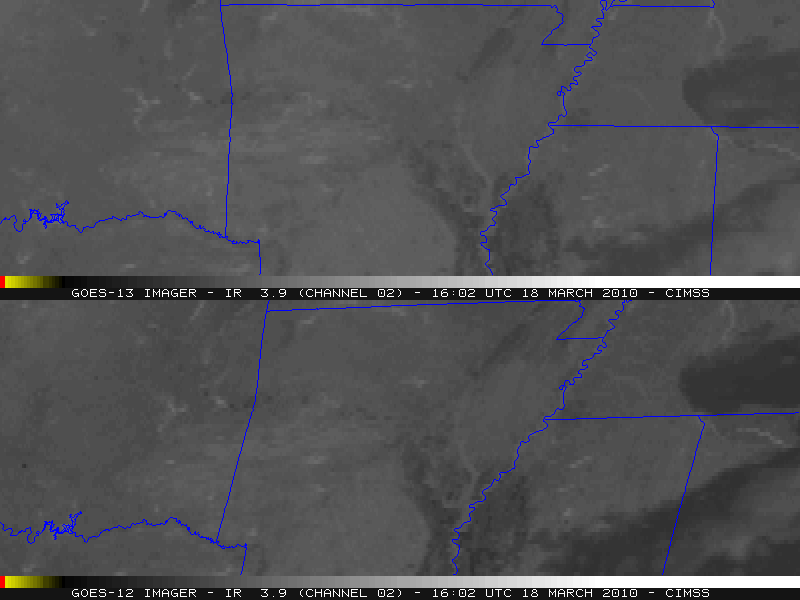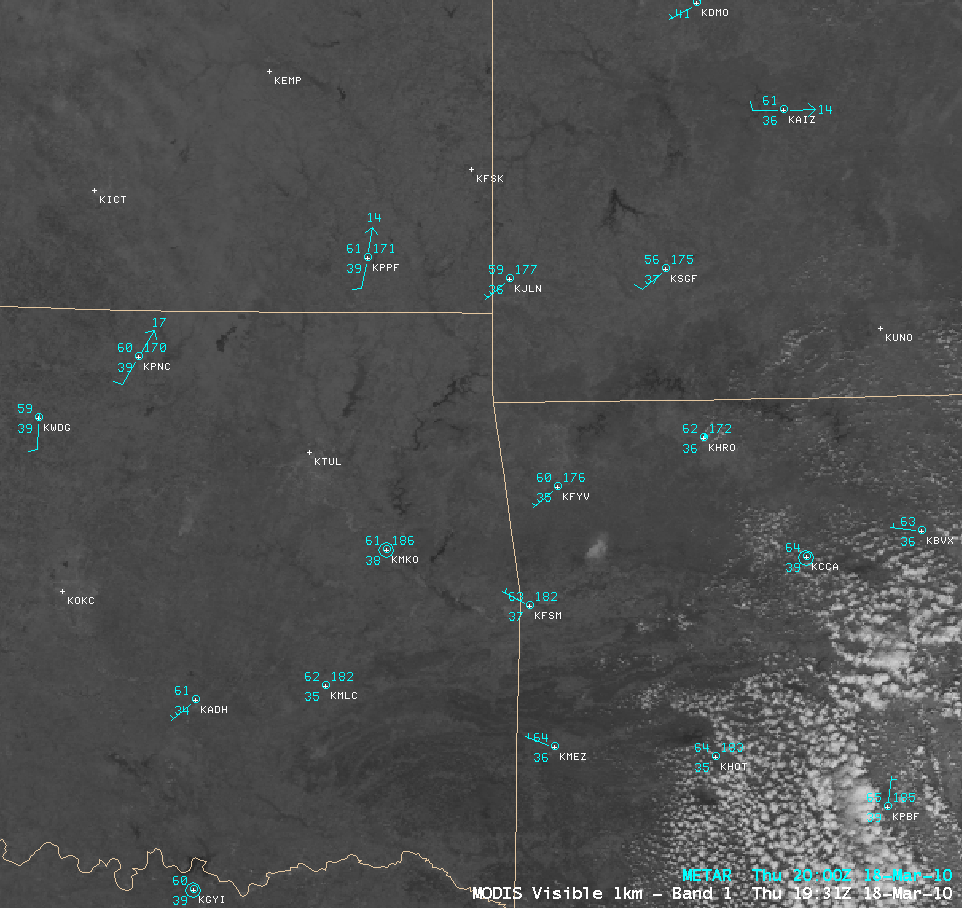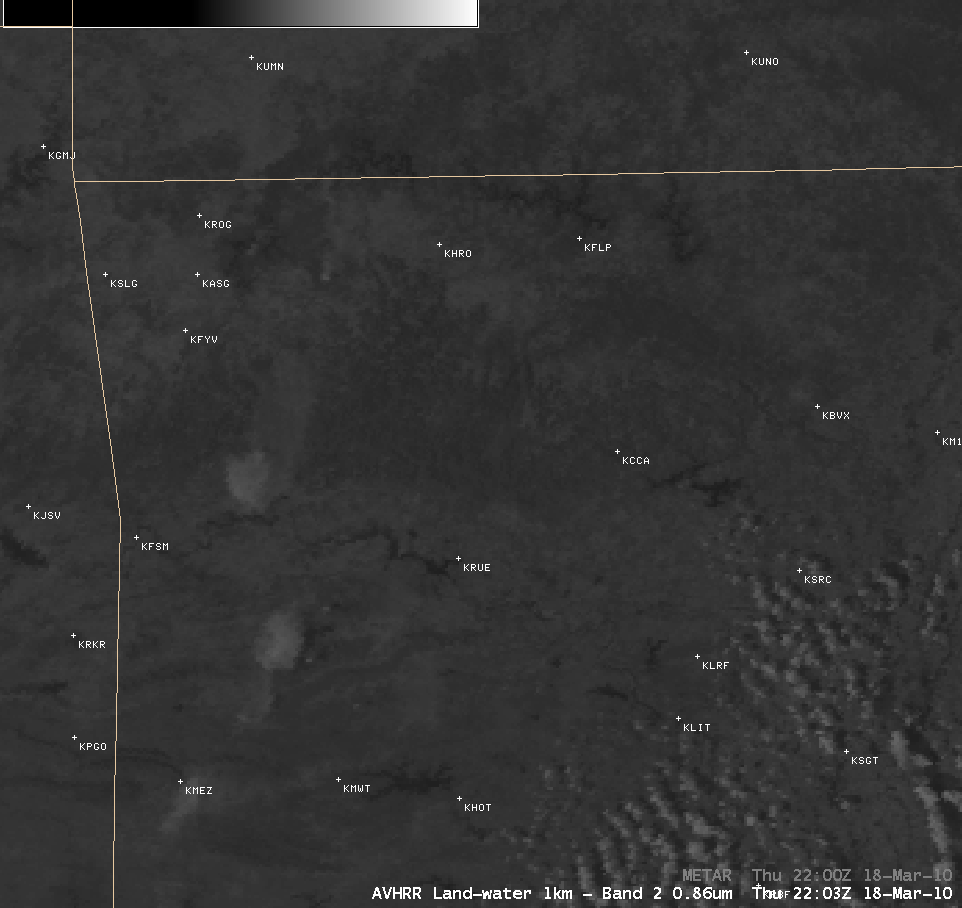The Eyjafjallajökull volcano in southern Iceland (which had last erupted in the 1820s) experienced a minor eruption on 21 March 2010. An AVHRR 3.7 µm shortwave IR image from the polar-orbiting NOAA-19 satellite (above) showed evidence of a “hot spot” (black to yellow pixels) due to the resulting lava flows.
According to the London VAAC, the volcanic eruption did not produce significant volcanic ash above the 5000 foot level:
Icelandic Met Office.FVXX01 EGRR 211458
VA ADVISORY
DTG: 20100321/1200Z
VAAC: LONDON
VOLCANO: EYJAFJOLL
PSN: N6339 W01926
AREA: ICELAND
SUMMIT ELEV: 1000M
ADVISORY NR: 2010/006
INFO SOURCE: ICELAND MET OFFICE
AVIATION COLOUR CODE: UNKNOWN
ERUPTION DETAILS: ERUPTION CONTINUES
OBS VA DTG: 21/1200Z
OBS VA CLD: SFC/FL050 N6331 W01923-N6559 W02252-N6559 W03252-N6047 W03823-N6017 W0342 -N6331 W01923
FCST VA CLD +6HR: 21/1800Z SFC/FL050 N6331 W01919-N6705 W02525-N6704 W03621-N5801 W04323-N5633 W03545-N6143 W03035-N6331 W01919
FCST VA CLD +12HR: 22/0000Z SFC/FL050 N6331 W01903-N6750 W02833-N6750 W03955-N6131 W04520-N5435 W04459-N5501 W03207-N5954 W03105-N6331 W01903
FCST VA CLD +18HR: 22/0600Z SFC/FL050 N6342 W01929-N6838 W03232-N6808 W04515-N5426 W04601-N5202 W03737-N5644 W02954-N6143 W03247-N6342 W01929
RMK: THIS ADVISORY SUPERCEDES ADVISORY 2010/005. VOLCANIC ASH NOT ABOVE FL050, ERUPTION MAINLY LAVA
NXT ADVISORY: 20100321/1800Z=
24 MARCH UPDATE
The minor volcanic eruptions continued for several days; meteorological clouds often obscured Iceland during that time, but on 24 March an overpass of NASA’s Aqua satellite allowed another view of the lava flow “hot spot” (red pixels) on a 1-km resolution MODIS 3.7 µm shortwave IR image (above). The maximum IR brightness temperatures within the red pixel area were 330 K. Additional photos and video have been posted by the Icelandic Met Office.
View only this post Read Less


